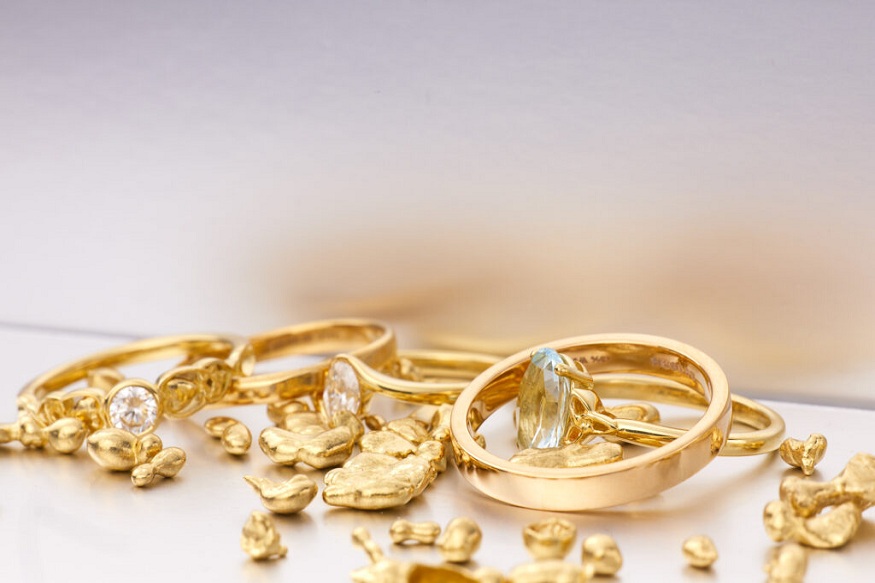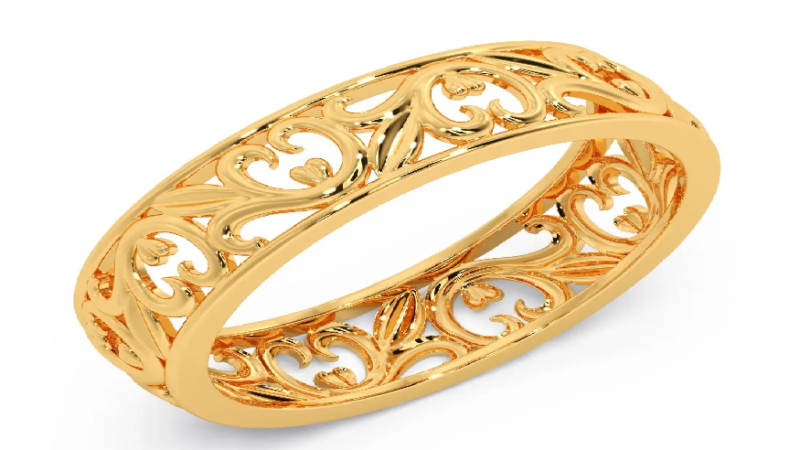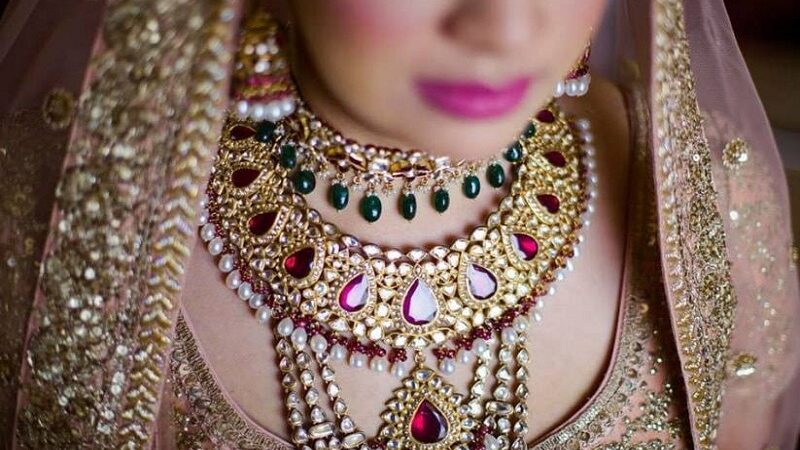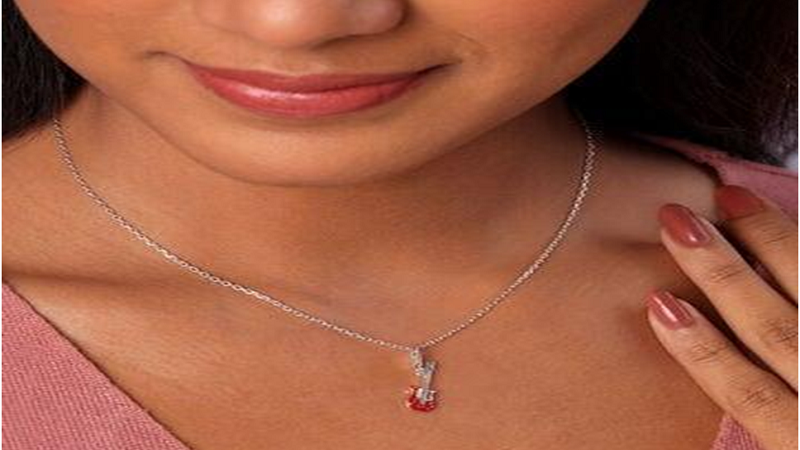From Celtic Princes to Modern Royalty: The 3,000-Year Journey of Welsh Gold

In the rolling hills of Snowdonia, beneath layers of slate and volcanic rock, lies a treasure that has adorned princes and paupers, Celtic warriors and contemporary royalty for over three millennia. Welsh gold’s journey from Bronze Age burial grounds to modern royal wedding rings reads like an epic novel—one written in precious metal and measured not in pages, but in centuries.
This is the extraordinary story of how a geological accident, formed 500 million years ago in the fires of ancient volcanoes, became the most coveted gold in the world, connecting us to our ancestors through an unbroken chain of precious metal that spans the entire recorded history of Wales.
The Bronze Age Legacy: Where Legend Begins
Our story begins in 1833, not with miners or royalty, but with farm labourers working fields near Mold in Flintshire. What they discovered would rewrite our understanding of Bronze Age Britain and establish Welsh gold’s claim as the most historically significant precious metal in the British Isles.
The Mold Cape, as archaeologists would later name it, emerged from the earth like something from a fairy tale—a ceremonial golden cape crafted from a single ingot weighing 560 grams of pure Welsh gold. Carbon dating revealed this masterpiece to be over 3,800 years old, making it not just one of the finest examples of Bronze Age craftsmanship in Europe, but tangible proof that Welsh gold was considered precious enough for the highest echelons of ancient society.
The cape’s intricate repoussé work—hundreds of tiny raised dots and ribbed patterns—demonstrates sophisticated goldsmithing techniques that would challenge contemporary artisans. More importantly, it establishes Welsh gold’s credentials as the material of choice for ceremonial regalia millennia before the first Roman set foot in Britain.
Archaeological evidence suggests the cape belonged to a Bronze Age priest-king, someone powerful enough to command such extraordinary wealth. The choice of Welsh gold wasn’t accidental—even 4,000 years ago, this material carried special significance that transcended mere monetary value.
Celtic Princes and Sacred Torcs
As Bronze Age cultures evolved into the Celtic civilisations that defined pre-Roman Britain, Welsh gold maintained its exalted status. Celtic nobles wore torcs—twisted metal neck rings that signified rank and power—crafted from Welsh gold that glowed with the distinctive rose hue that remains its signature characteristic to this day.
These weren’t mere ornaments but symbols of divine authority. Celtic druids believed that Welsh gold possessed mystical properties; its rose-tinted gleam reflected the sacred fires that burned in their temples. Archaeological finds across Wales reveal that Celtic goldsmiths developed increasingly sophisticated techniques, creating intricate patterns that influenced Celtic art for centuries to come.
The Celts understood something about Welsh gold that modern geology has confirmed—its unique composition, enriched with copper traces that create the distinctive colour, made it immediately recognisable as authentically Welsh. In an ancient world where trade routes stretched from Ireland to the Mediterranean, Welsh gold served as a guarantee of origin, an ancient hallmark of quality.
Roman Conquest and Industrial Mining
When the Romans invaded Britain in 43 AD, they introduced engineering expertise that transformed Welsh gold mining from scattered, individual efforts into an industrial operation. The Dolaucothi mine in Carmarthenshire became the Roman Empire’s westernmost gold mining operation, employing sophisticated hydraulic techniques that carved entire hillsides away in pursuit of precious veins.
Roman records suggest Dolaucothi produced substantial quantities of Welsh gold between 75 and 300 AD, much of which found its way to Rome’s imperial treasury. Roman coins struck with Welsh gold circulated throughout the Empire, carrying a piece of Wales to distant provinces and establishing Welsh gold’s reputation across the civilised world.
The Romans recognised the exceptional quality of Welsh gold. Imperial goldsmith manuals from the period specifically reference “AurumCambrensis”—Welsh gold—as superior to alternatives from Spain or Gaul. This wasn’t mere imperial propaganda, but a recognition of Welsh gold’s unique physical properties, which made it particularly suitable for fine jewellery and ceremonial objects.
Medieval Mysteries and Royal Connections
Following the Roman withdrawal in 410 AD, Welsh gold mining entered a period of reduced activity, although archaeological evidence suggests it never ceased entirely. Medieval Welsh princes continued the tradition of wearing Welsh gold regalia, understanding its symbolic importance in asserting their legitimacy and connection to the land.
The medieval period established a connection between Welsh gold and sovereignty that would later prove crucial to its royal adoption. Welsh law codes from this era specifically mention gold as a royal prerogative, establishing legal precedents that connected Welsh gold ownership with royal authority.
During this period, Welsh gold also acquired religious significance. Medieval chronicles record that several Welsh churches possessed altar vessels and religious regalia crafted from local gold, which were blessed by abbots who understood their spiritual as well as material value.
The Victorian Gold Rush: Rediscovery and Romance
The modern chapter of Welsh gold’s story began in 1854 when William Pritchard, a local farmer, discovered rich veins of gold in the Clogau area of Snowdonia. What followed was Wales’s gold rush, attracting prospectors, investors, and fortune-seekers from across Britain and beyond.
The Clogau mine, along with several smaller operations in the region, produced substantial quantities of Welsh gold between 1854 and 1911. Victorian mining techniques, though primitive by modern standards, extracted enough gold to establish Welsh gold’s commercial viability while simultaneously creating the mystique that surrounds it today.
Victorian society embraced Welsh gold with enthusiasm that bordered on obsession. The distinctive rose hue became fashionable in the finest London jewellery shops, while the romantic associations with wild Welsh landscapes appealed to Victorian sensibilities. Prominent Victorians, including members of the Rothschild family and various peers of the realm, commissioned Welsh gold pieces that established its credentials among the social elite.
The Royal Revolution: Lloyd George’s Gift
The transformation of Welsh gold from valuable curiosity to royal tradition occurred in 1923 through a single act of Welsh nationalism and political acumen. David Lloyd George, former Prime Minister and proud Welshman, presented a nugget of Clogau gold to King George V for Lady Elizabeth Bowes-Lyon’s wedding ring.
This wasn’t merely a gift but a political statement that connected the Royal Family directly to Wales through the most intimate symbol of marriage. Lloyd George understood the symbolic power of his gesture—by establishing this precedent, he ensured that every future royal marriage would carry a piece of Wales to the altar.
The gift created an unbreakable tradition that has survived abdications, wars, and constitutional crises. From Queen Elizabeth II’s wedding ring in 1947 to King Charles III’s coronation rings in 2023, Welsh gold has become inextricably linked to royal legitimacy.
Contemporary Custodianship: Clogau’s Mission
When the Clogau company was founded in 1989, it inherited more than just remaining gold stocks—it assumed responsibility for stewarding 3,000 years of Welsh heritage. Every piece created by Clogau reduces the finite supply of Welsh gold, making the company both curator and custodian of an irreplaceable cultural treasure.
Clogau’s approach reflects a profound understanding of the historical significance of Welsh gold. Rather than simply marketing jewellery, they position themselves as custodians of Welsh heritage, ensuring that contemporary pieces honour the artistic traditions established by Bronze Age artisans and refined by Celtic, Roman, and Victorian artisans.
The Modern Legacy: Accessibility Meets Heritage
Today’s Welsh gold market represents a unique convergence of ancient heritage and modern accessibility. Through Clogau Outlet’s pricing strategies, jewellery enthusiasts can acquire pieces that connect them directly to 3,000 years of Welsh history at prices that make this extraordinary heritage surprisingly attainable.
This democratisation of Welsh gold represents something unprecedented in the luxury jewellery market. Where once only Celtic princes, Roman emperors, and British royalty could afford Welsh gold, contemporary outlet pricing makes it accessible to anyone who appreciates its extraordinary provenance.
For jewellery enthusiasts building collections, Welsh gold pieces represent more than beautiful objects—they’re tangible connections to Britain’s longest documented precious metal heritage. Each piece carries within its golden matrix the stories of Bronze Age priest-kings, Celtic druids, Roman engineers, Victorian miners, and contemporary royalty.
Investment in Eternity
From an investment perspective, Welsh gold’s 3,000-year journey demonstrates extraordinary resilience and consistent appreciation. Materials that have maintained their desirability across Bronze Age burial grounds, Roman treasuries, medieval churches, Victorian drawing rooms, and contemporary royal weddings possess staying power that transcends temporary market fluctuations.
The finite nature of Welsh gold supplies means that each piece acquired today represents a decreasing percentage of total availability. As archaeological discoveries continue to reveal the historical importance of Welsh gold, and royal traditions perpetuate its contemporary relevance, demand can only increase, while supply inevitably diminishes.
Styling Ancient Heritage
Modern jewellery enthusiasts incorporating Welsh gold into contemporary wardrobes participate in styling traditions that stretch back millennia. The same rose-gold hue that adorned Celtic torcs complements modern fashion with timeless elegance that transcends temporary trends.
The key to styling Welsh gold lies in understanding its historical weight without being overwhelmed by it. These pieces work equally well as statement jewellery that celebrates their heritage or as subtle accents that whisper rather than shout their extraordinary provenance.
The Unbroken Chain
From the Mold Cape to Queen Camilla’s wedding ring, Welsh gold represents an unbroken chain of cultural continuity unique in the modern world. No other precious metal can claim continuous prestigious use across 3,000 years of documented history, surviving the rise and fall of empires, the transformation of societies, and the evolution of artistic styles.
For contemporary jewellery enthusiasts, Welsh gold offers something no other material can provide—the opportunity to own and wear a piece of living history that connects them directly to Bronze Age princes, Celtic druids, Roman emperors, and modern royalty. Through Clogau Outlet’s accessible pricing, this 3,000-year journey becomes not just a fascinating story, but a wearable reality.
The journey continues, and through Welsh gold, we all become part of its extraordinary narrative.






